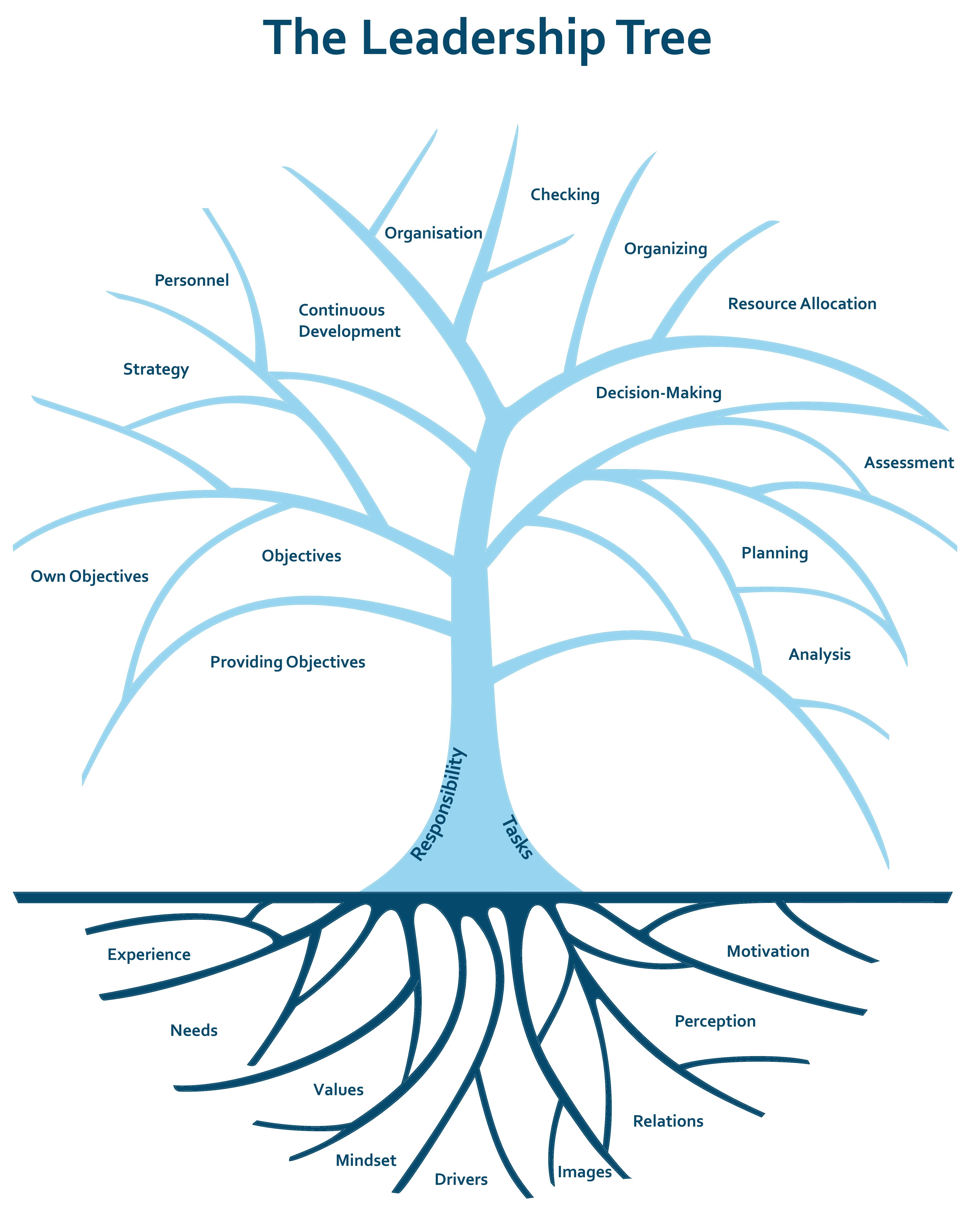The Leadership Tree: A Leadership Model
The Leadership Tree - In a Nutshell
Especially in times of high competition the effectiveness of leadership determines the success of an enterprise. The actions and decisions of managers are not only driven by rationale. Also unconscious processes account for them. The Leadership Tree comprises the conscious as well as the involuntary aspects. Thereby the Leadership Tree supports the systematic and structured approach to leadership and management.

Download
You are free to use The Leadership Tree. It is available for download in the following formats:
- English PDF DIN A2
- English JPG

This work is licensed under a Creative Commons Attribution-NoDerivatives 4.0 International License.
Background
The Management Wheel by Malik is for many years a well established component in the discussion about leadership and management. It describes on an abstract level the tasks of managers and the tools used by them.
The iceberg model is used in many different flavours. It is based on the fact that only one eight of an iceberg is visible above the waterline. The remaining part is hidden in the water. This image is transferred to the conscious and unconsciuous human thinking.
The Leadership Tree
The Leadership Tree combines the iceberg modell and the Malik management wheel by depicting both the conscious as well as the unconscious aspects of human thinking. The conscious, rational aspects are represented by the branches, the unconscious aspects by the roots within the soil. The trunk stands for the tasks and the responsibilty of the manager.
Resource allocation and strategy development are typical examples of management tasks. They are depicted as branches of the tree in the upper part of the model - visible for everyone.
Examples of the involuntary aspects are the experience of the leader and her mind set. These contribute to the decision making and acting of the manager. They are depicted as roots of the tree - invisible in the soil.
As the tree gets its strength from the roots within the soil, the effectiveness of the manager depends on the unconscious tier. Self-management, management assessment, and development of leadership competence should take into account the importance of the invisible tier.
